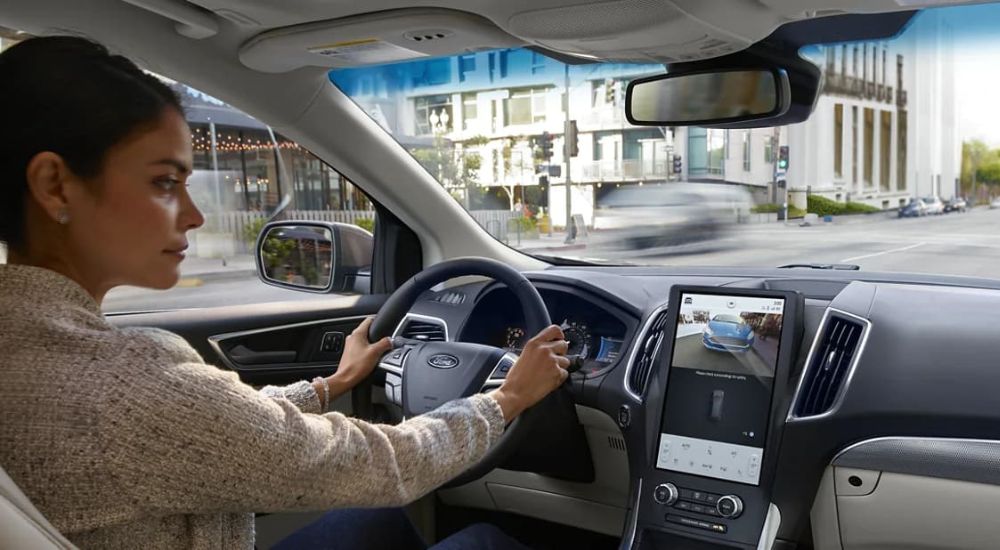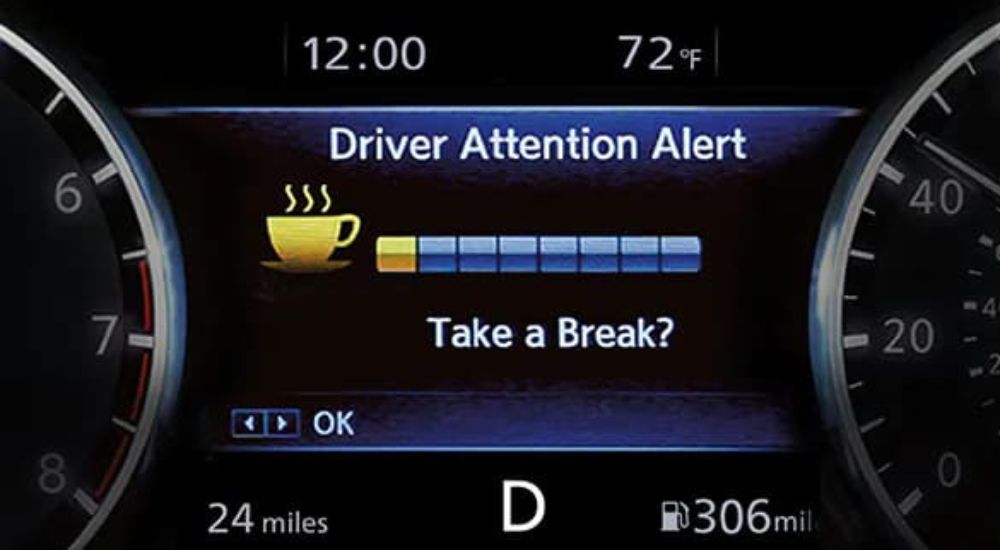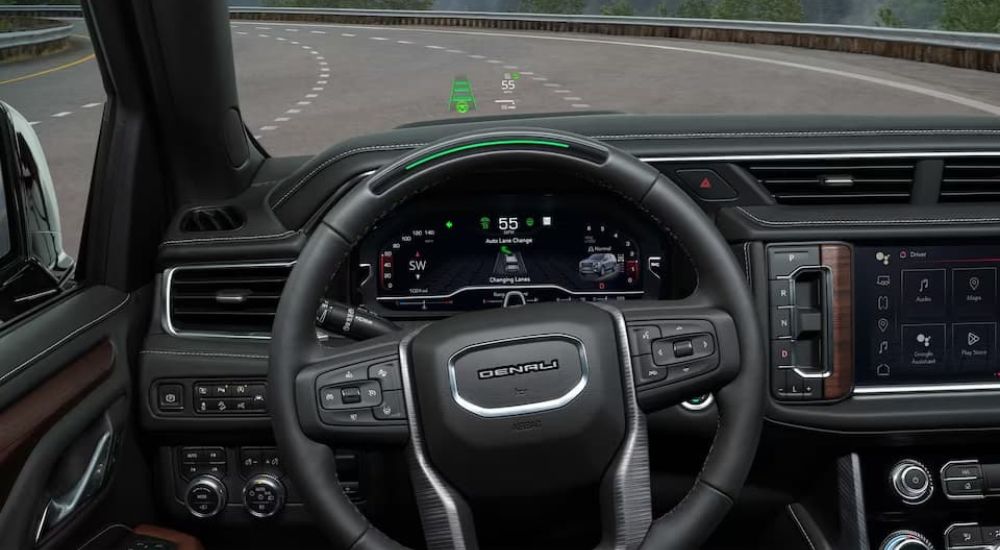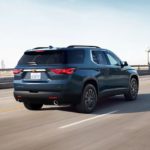If you’ve bought a car in the past few years, you’re probably familiar with driver assistance technology. Maybe you noticed the term while shopping around, or maybe you ignored it and were confused the first time your new vehicle beeped at you for getting too close to the edge of your lane. When driver assistance features first started hitting the market, they were often relegated to premium trim levels or optional packages, but they’re getting more and more common as standard features on vehicles ranging from sporty coupes and efficient sedans to roomy SUVs and hard-working pickup trucks.
Driver assistance is usually billed as a safety feature, but some driver assistance features have drivers nervous. Whether you’re skeptical about this new tech or excited about it, it’s important to stay informed. So let’s dive in and take a look at what driver assistance is, how prevalent it is, and which features aren’t all they’re cracked up to be (at least, not yet).
Driver Assistance 101
Driver assistance is a deceptively simple term that can refer to a wide range of tech features. The main thing that all of these features have in common is that they use automated systems to make driving easier or safer for the human behind the wheel. Sometimes they take direct action, and other times they provide extra information and warnings; often, they do both. Perhaps the best way to understand driver assistance tech is to look at some of the most popular features currently offered by automakers. These features might have different names when you look at different manufacturers, but they generally do the same things.
- Backup Camera – Gives you a live feed of the area behind your vehicle while you’re in reverse.
- Forward Collision Warning – Uses sensors to detect when you’re in imminent danger of a forward collision and uses visual and/or audio alerts to prompt you to take action. Some systems are only able to reliably detect other vehicles, while others have cyclist or pedestrian detection systems as well.
- Automatic Emergency Braking – Either hits the brakes on its own or supplements your manual braking in order to prevent or mitigate damage from a forward collision.
- Rear Cross Traffic Alert – Uses sensors to check for cars passing behind you while you’re in reverse, usually coming in handy when you’re backing out of a parking space.
- Adaptive Lighting – Detects the levels of light around your vehicle and the presence of oncoming traffic and can adjust your headlights accordingly. For example, automatically turning your high beam headlights on and off as needed.
- Lane Departure Warning – Senses when you may be unintentionally drifting out of your lane and gives you an alert so you can take action.
- Lane Keeping Assist – Uses corrective steering to automatically prevent you from unintentionally drifting out of your lane.
- Blind Spot Detection – Senses when there’s a vehicle in your blind spot and lets you know, often through lights built into the side-view mirrors and possibly through a more prominent alert if you put on your turn signal while a vehicle is in your blind spot.
- Adaptive Cruise Control – Maintains a set distance between you and the vehicle in front of you, slowing down or stopping as needed and speeding back up to the set speed when possible.
- Hands-Free Driving – This is essentially a combination of lane keeping assist and adaptive cruise control, keeping you both centered in your lane and a safe distance away from the vehicle in front of you automatically. Usually only works on pre-mapped roads.
- Driver Attention Alert – Senses when you may be tired or distracted behind the wheel and gives you an alert letting you know you need to refocus or possibly pull over and get some rest.
Most Features Are Getting High Marks
As the old saying goes, to err is human. Driving accidents injure and kill people on the road every day, and often the cause of collisions is human error. People can get tired or distracted behind the wheel and make small mistakes that have big consequences. None of these technologies can replace being alert, sober, and fully awake behind the wheel, and you can’t take a hands-off approach and expect them to be 100% reliable (even the hands-free driving features). Still, they can be an extra layer of protection working to prevent collisions.
The National Highway Traffic Safety Administration, part of the US Department of Transportation, rates vehicles based on safety. The administration believes “that driver assistance technologies are the right path toward safer roads” and takes a vehicle’s safety technology into account when giving it a safety rating. One important thing to note here is that not all features with the same function are created equal. Looking up a model you’re considering on NHTSA’s website is a great way to see whether its particular driver assistance features meet the administration’s standards.
Semi-Autonomous Features: The Bumpy Road to Self-Driving Cars
Warnings about imminent collisions and icons showing that someone’s in your blind spot are relatively uncontroversial. Even features that control some of the car’s functions automatically, like emergency braking and corrective steering, are generally regarded as safe, since they control a limited function in a narrow set of circumstances and generally don’t make drivers feel like they can take their focus off the road. However, systems that get closer to “self-driving” technology have seen their share of bad press. While there are currently no true self-driving cars sold in the US, there are some vehicles with “semi-autonomous” technology on the market today.
GM’s Super Cruise allows drivers to go “hands-free” on pre-mapped sections of highways throughout the United States and Canada. Ford’s BlueCruise is a similar technology, also designed for freeway use. Both automakers make it clear that drivers need to remain attentive while the system is in use and be ready to take over control of the vehicle at any time. Still, there is a worry that drivers won’t heed these warnings and will get into trouble when these relatively new systems face situations that they can’t handle predictably.
When it comes to semi-autonomous technology, there’s no automaker more infamous than Tesla. Tesla’s Autopilot system wad the first and is still more well-known than Super Cruise or BlueCruise, boasting that it can work not only on any highway but on city streets as well, using a combination of onboard navigation and sensors to get around just about anywhere. In retrospect, this was probably biting off more than the company could chew. The system has been the subject of a formal US government investigation, the cause of a recall affecting over 350,000 vehicles, and the crux of a vehicular manslaughter case in which a Tesla driver using Autopilot ran a red light and collided with another car, killing two people. Not to mention, there are plenty of videos out there of people using AutoPilot and sleeping behind the wheel, doing their makeup, or otherwise not paying attention to the road whatsoever. This has given many people pause over whether this technology is a good thing to have.
What’s Next for Driver Assistance?
For now, most driver assistance features are optional. It’s up to the automaker to decide what features they want to include as standard and which they want to offer for an added cost, but that might not be the case forever. The backup camera is an example of a technology that started out as a high-tech safety feature but is now required by law to be included in every new car sold in the United States. As new data comes in about the effectiveness of driver assistance features, it’s likely that the ones that do a good job of keeping drivers and pedestrians safe will eventually be required equipment as well.
Drivers who are concerned about change happening too quickly and technologies becoming mandatory before they’re ready, the backup camera example also shows us how long it can take for these regulations to roll out. A law requiring new regulations for rear-view visibility technology was passed by Congress back in 2008, and the Department of Transportation didn’t announce the camera requirement until 2014. The regulation finally went into effect four years later in May 2018.
Basically, pacing is important when it comes to technologies affecting something as serious as driving. When automakers take incremental steps and don’t widely release new tech until it’s been fully tested and deemed safe, then new technology can be a great way to improve safety on the road. But when companies like Tesla take the “move fast and break things” approach, the consequences can be disastrous. The one good thing about the autopilot incident is that it’s given automakers and regulators alike a chance to reflect and learn from its mistakes. Going forward, we can only hope that driver assistance will move forward at a more reasonable pace, making the roads safer for everyone.






